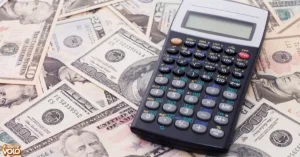Navigating the world of student loans can be daunting, but understanding unsubsidized loans is a crucial step in securing your education funding. Unsubsidized loans, unlike their subsidized counterparts, accrue interest from the moment the loan is disbursed, making it essential to consider the long-term costs.
These federal loans are available to both undergraduate and graduate students, regardless of financial need, offering a reliable option for those who might not qualify for need-based aid. With flexible repayment plans and the ability to defer payments while in school, unsubsidized loans provide a supportive financial safety net.
Staying informed about the interest accumulation and planning accordingly can help you manage your debt effectively post graduation. Understanding these key aspects can empower you to make educated decisions about your education financing, ensuring you’re prepared for the future without unexpected financial strain.
What is a Direct Unsubsidized Loan?
A direct unsubsidized loan is a type of federal student loan that is available to eligible students regardless of their financial need. Unlike subsidized loans, where the government covers the interest that accrues while you’re in school and during grace periods, with an unsubsidized loan, you are responsible for paying all the interest that accumulates from the time the loan is disbursed.
It’s important to note that there are annual and aggregate borrowing limits for direct unsubsidized loans. These limits vary depending on your year in school and whether you are a dependent or independent student.
Here’s a table that outlines the current loan limits:
| Year in School | Dependent Students | Independent Students |
| First-Year Undergraduate | $5,500 (no more than $3,500 in subsidized loans) | $9,500 (no more than $3,500 in subsidized loans) |
| Second-Year Undergraduate | $6,500 (no more than $4,500 in subsidized loans) | $10,500 (no more than $4,500 in subsidized loans) |
| Third-Year and Beyond Undergraduate | $7,500 (no more than $5,500 in subsidized loans) | $12,500 (no more than $5,500 in subsidized loans) |
| Graduate or Professional Students | Not Applicable | $20,500 (unsubsidized only) |
Remember, these are just the limits for direct unsubsidized loans. Your school’s financial aid office will determine the actual amount you’re eligible to borrow based on your individual circumstances.
Who Qualifies for Direct Unsubsidized Loans?
To qualify for a direct unsubsidized loan, you must meet the following basic eligibility criteria:
- You must be enrolled at least half-time in an eligible degree or certificate program at an approved institution.
- You must be a U.S. citizen, a U.S. national, or a permanent resident of the United States.
- You must maintain satisfactory academic progress as defined by your school.
Unlike some other types of loans, there is no credit check required for direct unsubsidized loans. If you have adverse credit history (such as defaulted federal student loans or excessive debt), you may face additional requirements or be denied access to federal student aid.
How to Apply for a Direct Unsubsidized Loan

Fill Out the FAFSA
The first and most crucial step in applying for any type of federal student aid, including direct unsubsidized loans, is to complete the Free Application for Federal Student Aid (FAFSA). You can access and submit the FAFSA online.
Completing the FAFSA is the single most important thing you can do to get financial aid for college. Mark Kantrowitz, Student Loan Expert
When filling out the FAFSA, you’ll need to provide information about your and your family’s financial situation, including tax returns, bank statements, and asset information. It’s essential to complete the FAFSA as early as possible, as some types of aid are awarded on a first-come, first-served basis.
Review Financial Aid Award Letter
Once you’ve submitted your FAFSA, the schools you’ve applied to will review your information and determine the types and amounts of financial aid you’re eligible for, including direct unsubsidized loans. This information will be outlined in a financial aid award letter that each school will send you.
Review your award letters carefully, as the amount of direct unsubsidized loan you’re offered may vary from school to school. If you’ve been accepted to multiple schools, compare their aid packages to determine which one provides the best overall financial assistance.
At this stage, you’ll have the opportunity to accept, decline, or adjust the aid you’ve been offered, including the amount of direct unsubsidized loan you wish to borrow.
Complete Loan Entrance Counseling
Before you can receive your first direct unsubsidized loan, you’ll need to complete loan entrance counseling. This online tutorial, available at studentaid.gov, will provide you with important information about borrowing student loans, including:
- An overview of the different types of federal student loans
- Your rights and responsibilities as a borrower
- Repayment plans and options
- Strategies for managing your debt and avoiding default
Completing loan entrance counseling is a crucial step in ensuring you understand the terms and conditions of your direct unsubsidized loan and the implications of borrowing money for your education.
Sign the Master Promissory Note
The final step in the application process is to sign the Master Promissory Note (MPN). This legally binding document outlines the terms and conditions of your direct unsubsidized loan, including your agreement to repay the loan with interest.
You can complete the MPN online at studentaid.gov. Be sure to read the document carefully and understand your rights and responsibilities as a borrower before signing.
Receiving & Managing Loan Funds

As a borrower, it’s your responsibility to use these funds appropriately and solely for education related expenses. Misusing student loan funds can have serious consequences, including potential legal action.
Repayment of Direct Unsubsidized Loans

After you graduate, leave school, or drop below half-time enrollment, you’ll have a six-month grace period before you’re required to begin repaying your direct unsubsidized loans. During this time, you’ll need to select a repayment plan that works best for your financial situation.
The standard repayment plan for direct unsubsidized loans is a 10-year plan with fixed monthly payments. There are also extended repayment plans (up to 25 years), income-driven repayment plans, and other options available depending on your circumstances.
Maximizing Your Unsubsidized Loan

Here are some tips for maximizing your unsubsidized loan:
- Borrow only what you need: Carefully calculate your educational expenses and borrow only the amount you need to cover those costs.
- Take advantage of federal loans first: Federal student loans, like direct unsubsidized loans, typically have more favorable terms and repayment options than private loans. Exhaust your federal loan options before considering private loans.
- Work part-time and budget wisely: Supplement your aid with income from a part-time job and carefully manage your expenses to minimize the amount you need to borrow.
- Make interest payments while in school: Although not required, making interest payments on your unsubsidized loans while you’re in school can help reduce the overall amount of interest you’ll pay over the life of the loan.
By following these tips and borrowing responsibly, you can maximize the benefits of your direct unsubsidized loan while minimizing the long-term financial burden.
Conclusion
Navigating the world of student loans can be daunting, but understanding the process of applying for a direct unsubsidized loan is crucial for many students seeking to finance their education.
Following the steps outlined in this guide filling out the FAFSA, reviewing financial aid award letters, completing loan entrance counseling, and signing the Master Promissory Note you’ll be well on your way to securing the funds you need.
Remember, a direct unsubsidized loan is a valuable resource, but it’s essential to borrow responsibly and manage your debt effectively. Utilize strategies like borrowing only what you need, taking advantage of federal loans first, working part time, and making interest payments while in school to maximize your loan and minimize the long-term financial burden.
If you’re still unsure about any aspect of the process or have additional questions, don’t hesitate to reach out to your school’s financial aid office or consult the wealth of resources available on government websites.

Steven Green, our website’s author, leverages 6 years of Finance expertise to provide insightful content. His wealth of experience enriches our platform, offering valuable insights for our readers.











